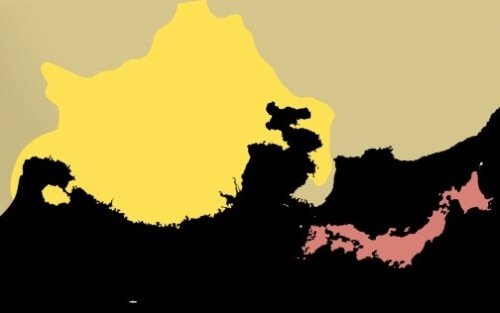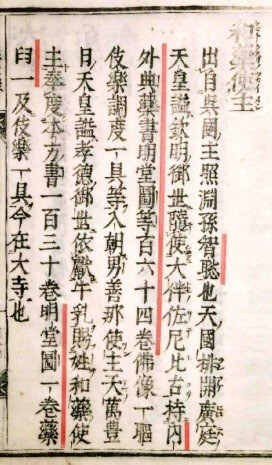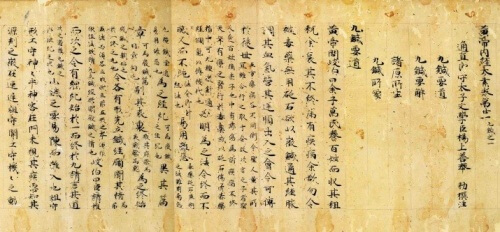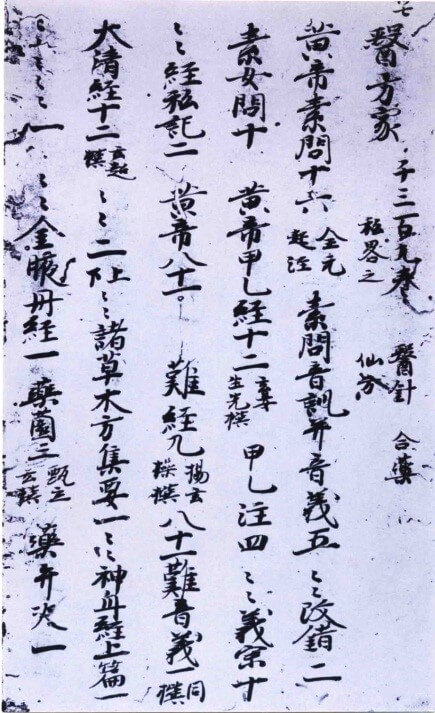Introduction of Acupuncture and Moxibustion to Japan
The introduction of continental medical culture to our country, as with the introduction of other continental culture until about the 6th century, was made mostly via the Korean peninsula. Slightly later than the introduction of Buddhism, the record of the first medical writings were pharmaceutical texts and “Meidō-zu” (“明堂図”)brought in 562 via the peninsula by a person named ZHI Chong(智聡) from Wu(呉). “Meidō-zu” is seemingly anatomical charts illustrating the location of acupoints on the human body.
From the 7th century, the start of official communication with China through ambassadors to the Sui and Tang dynasties, much medical culture was imported directly. Enichi and Fukuin played an important role. Soon the legislative system was also introduced and in 701 the Taihō-ritsuryō law was put into effect. Chinese medical texts from Han through the Six dynasties known as “Myaku-kyō” (“脈経”), “Kō-otsu-kyō” (“甲乙経”), “Honzō-kyō-shichū” (“本草経集注”), “Shō-hin-hō” (“小品方”), “Shū-ken-hō” (“集験方”), “Somon” (“素問”), “Shin-gyō” (“針経”) were designated as medical texts in the medical law Ishitsu-rei for the medical system and studied.
In this law, the laws of earlier Tang were adopted almost entirely unaltered and as a result reveal the Chinese policy practiced during that period. “Shin-gyō” was the old name for the “Reisū” (“霊枢”) and “Somon” comprised “Kōtei-daikei” (“黄帝内経”). “Kō-otsu-kyō” (Western Jin era) is a medical text of acupuncture and moxibustion recompiling “Meidō” (“明堂”), the explanatory text of the acupuncture points, “Somon” and “Reisū”. “Myaku-kyō” (Western Jin era) is a text on pulse diagnosis recompiled of “Kōtei-daikei”, “Shō-kan-ron” (“傷寒論”) and the other classical texts. “Honzō-kyō-shicchū” (“本草経集注”) (about 500 A.D.) is a pharmaceutical text complementing the “Shinnō-honzō-kyō” (“神農本草経”). “Shō-hin-hō” (“小品方”) (latter 5th century) and “Shū-ken-hō” (“集験方”) (latter 6th century) are medical texts focusing mainly on prescription medicine in the style of “Shō-kan-ron” (“傷寒論”).
During the Heian era the growing Japanese cultural awareness led to the compilation of original Japanese medical texts. It is said in 808 IZUMONO Hirosada and his followers compiled “Daidō-ruijū-hō” (“大同類聚方”), and his son SUGAWARANO Minetsugu and others before 870 compiled “Kinran-hō” (“金蘭方”), which were ordered by the emperor, however neither are known to exist.
The Japanese envoy to the Tang dynasty was discontinued in 838 and by that time almost all of the major Tang medical texts had been imported. “Nihonkoku-genzaisho-mokuroku” (“日本国見在書目録”) , circa 898, records 1309 volumes from 166 areas of Chinese medical and pharmaceutical texts, evidencing the zeal of the Japanese for absorbing Chinese medical culture.




KOSOTO Hiroshi
Director, Medical History Research Department,
Kitasato University Oriental Medicine Research Center